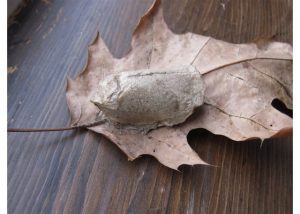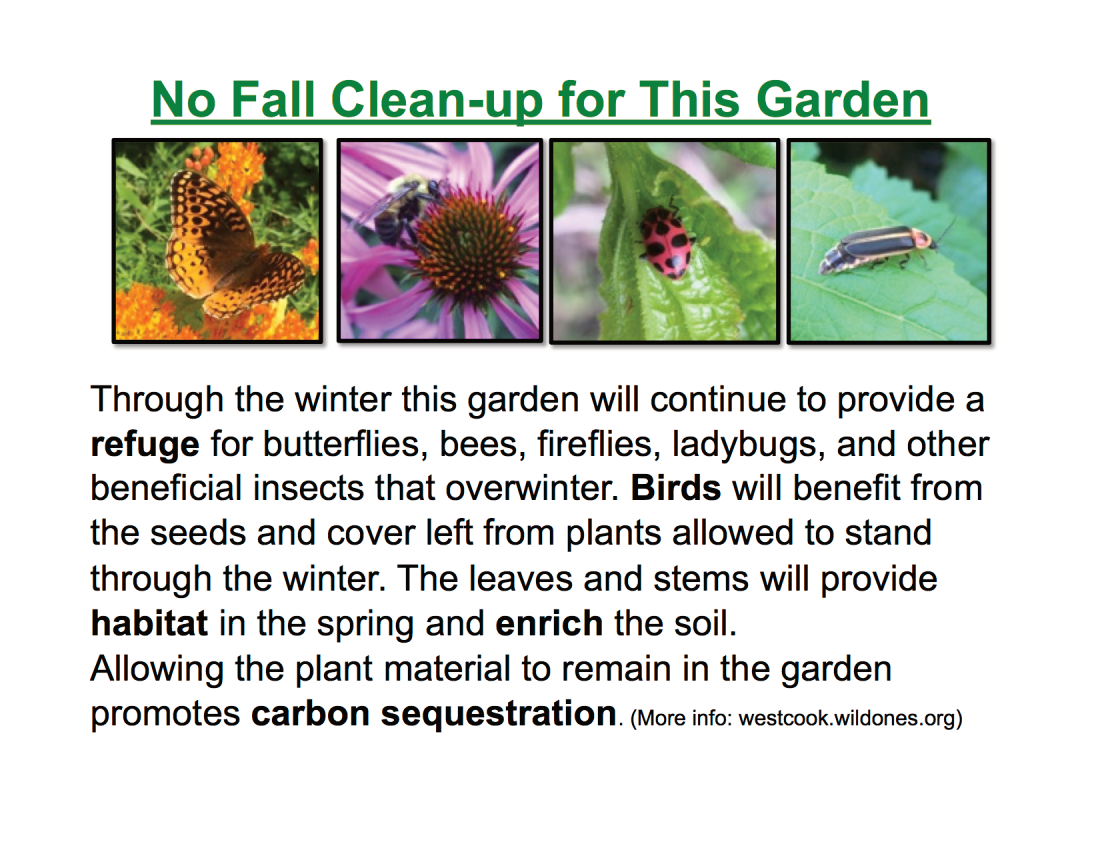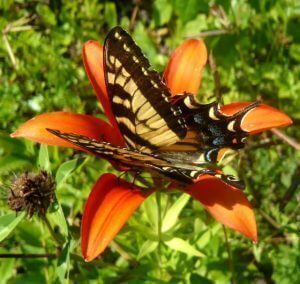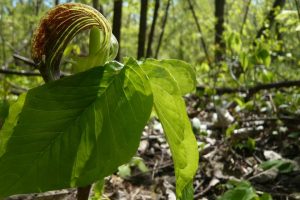What’s in a Leaf Pile?
A lot of potential for life is in a leaf pile. Many beneficial (and beautiful) insects overwinter in our yards. For instance, the Katydid (important food source for birds during late summer) and Preying Mantis overwinter as eggs attached to twigs, stems, and/or leaves. Ladybugs and Lacewings also spend the winter in our gardens. Native bees find winter homes in soil, plants (stems, under grasses), and leaves. Cutting down a garden and removing all litter in the fall reduces these insect populations, most of which are beneficial. According to the University of Maine, 97% of insects in our yards are beneficial. Furthermore, many of these insects are critical food sources for migrating birds and for birds raising their young. 95% of birds feed insects to their young even if the adults eat seeds (Tallamy, Bringing Nature Home). Keeping your healthy leaves either as garden mulch or in piles under trees or shrubs will offer you many benefits over the year. This plant material will:

feed microorganisms which feed your plants (there are complicated relationships under ground); these organisms in turn clean the water and air and improve soil texture. Many woodland/savannah plants require the leaf layer for the resulting rich humus.
keep water levels stable–absorbs more water, drains better, and keeps moisture available to your plants through drought(lots of seeming contradictions but it’s true).
mulch your garden through the winter.
provide refuge for overwintering bees, butterflies, moths, and other beneficial insects.
provide food for those above creatures provides food for birds.
provide cover for birds (they prefer having stems to perch on and hop around; less stress while foraging).
reduce the need to buy bags of mulch or compost and the associated pollution and costs connected to those items (plastic bags, transportation).
reduce pressure on finances and resources of the village; money saved there could go to more positive use. Also, reduces all the carbon emissions of the heavy equipment required for moving leaves.
We created a sign to help communicate why we are allowing gardens to stand through the winter. Please feel free to download, print, and hang in your garden.

For further reading: Life in the Soil: A Guide for Naturalist and Gardeners, James B. Nardi.
Teaming with Microbes: The Organic Gardener’s Guide to the Soil Food Web, Revised Edition, Lowenfels and Lewis
Habitat Network’s post on Leaf “Litter”
Adrian Ayres Fisher’s article Carbon Gardening: A Natural Climate Solution that Can Help Reduce CO2 Emissions While Restoring Biodiversity


